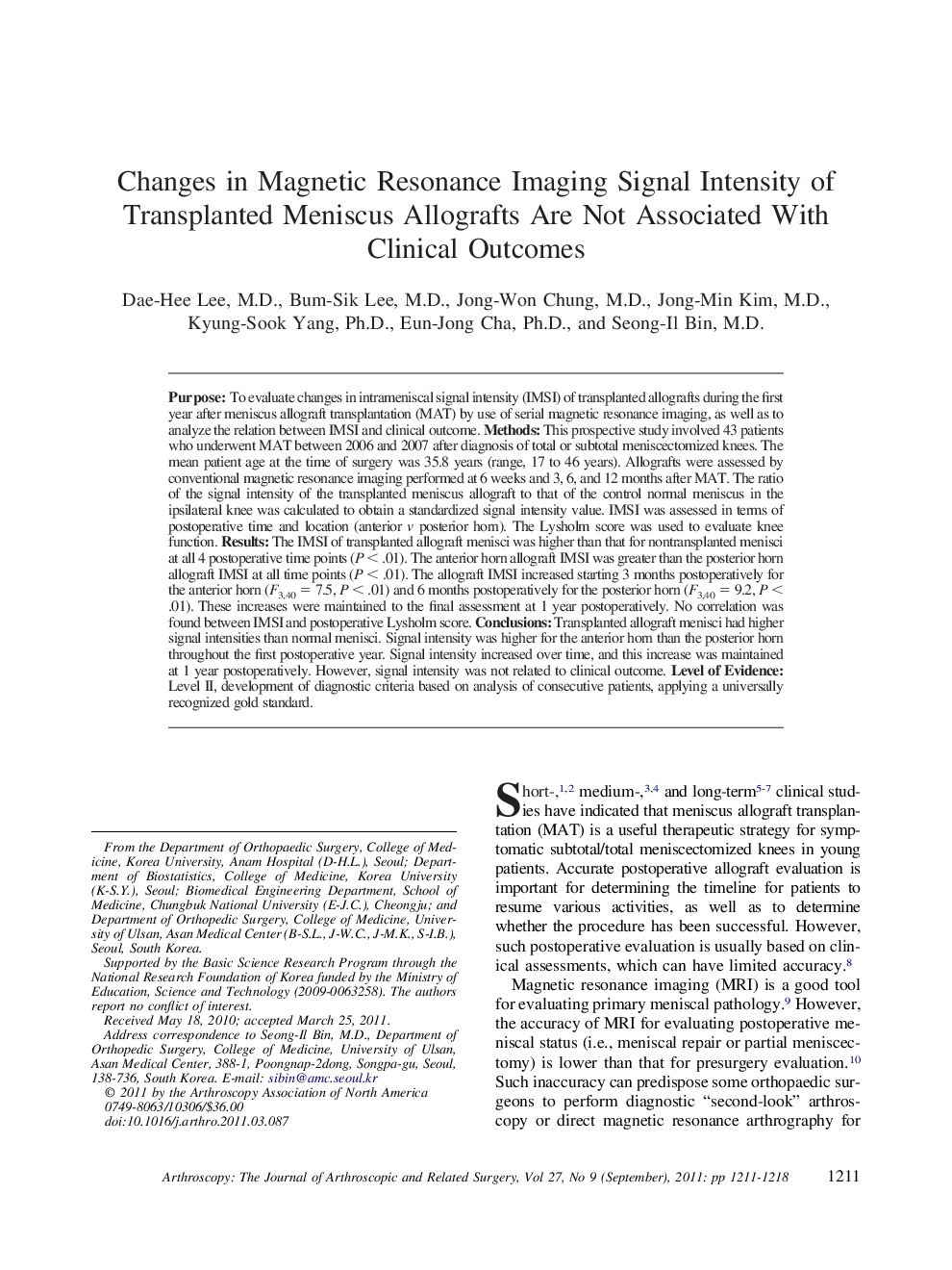| کد مقاله | کد نشریه | سال انتشار | مقاله انگلیسی | نسخه تمام متن |
|---|---|---|---|---|
| 4044671 | 1603538 | 2011 | 8 صفحه PDF | دانلود رایگان |

PurposeTo evaluate changes in intrameniscal signal intensity (IMSI) of transplanted allografts during the first year after meniscus allograft transplantation (MAT) by use of serial magnetic resonance imaging, as well as to analyze the relation between IMSI and clinical outcome.MethodsThis prospective study involved 43 patients who underwent MAT between 2006 and 2007 after diagnosis of total or subtotal meniscectomized knees. The mean patient age at the time of surgery was 35.8 years (range, 17 to 46 years). Allografts were assessed by conventional magnetic resonance imaging performed at 6 weeks and 3, 6, and 12 months after MAT. The ratio of the signal intensity of the transplanted meniscus allograft to that of the control normal meniscus in the ipsilateral knee was calculated to obtain a standardized signal intensity value. IMSI was assessed in terms of postoperative time and location (anterior v posterior horn). The Lysholm score was used to evaluate knee function.ResultsThe IMSI of transplanted allograft menisci was higher than that for nontransplanted menisci at all 4 postoperative time points (P < .01). The anterior horn allograft IMSI was greater than the posterior horn allograft IMSI at all time points (P < .01). The allograft IMSI increased starting 3 months postoperatively for the anterior horn (F3,40 = 7.5, P < .01) and 6 months postoperatively for the posterior horn (F3,40 = 9.2, P < .01). These increases were maintained to the final assessment at 1 year postoperatively. No correlation was found between IMSI and postoperative Lysholm score.ConclusionsTransplanted allograft menisci had higher signal intensities than normal menisci. Signal intensity was higher for the anterior horn than the posterior horn throughout the first postoperative year. Signal intensity increased over time, and this increase was maintained at 1 year postoperatively. However, signal intensity was not related to clinical outcome.Level of EvidenceLevel II, development of diagnostic criteria based on analysis of consecutive patients, applying a universally recognized gold standard.
Journal: Arthroscopy: The Journal of Arthroscopic & Related Surgery - Volume 27, Issue 9, September 2011, Pages 1211–1218